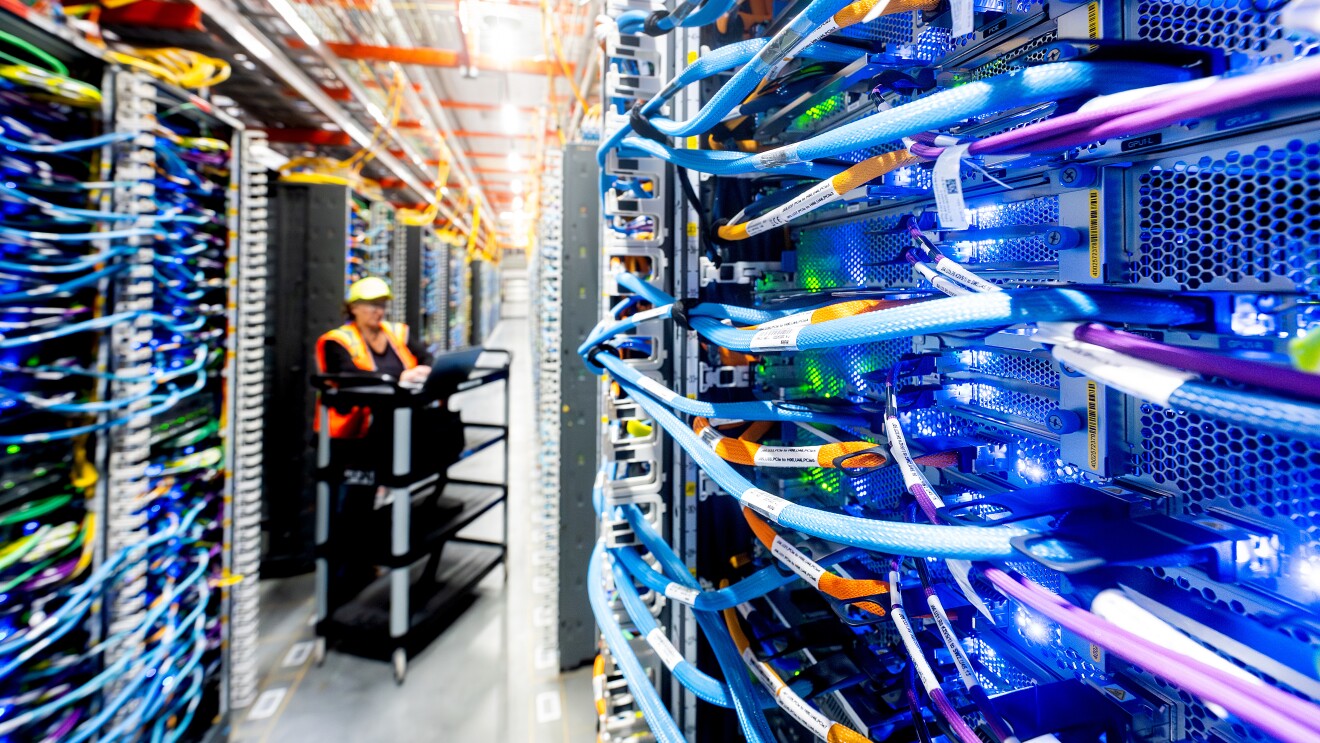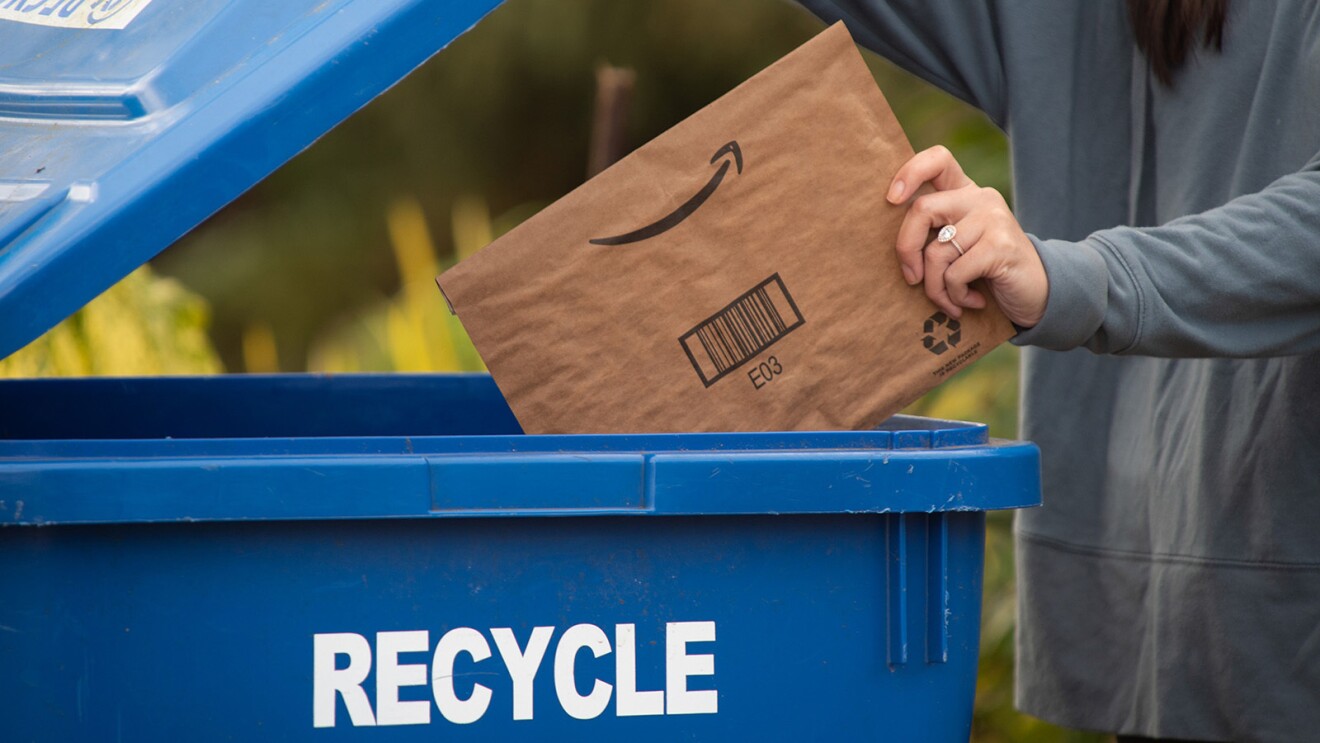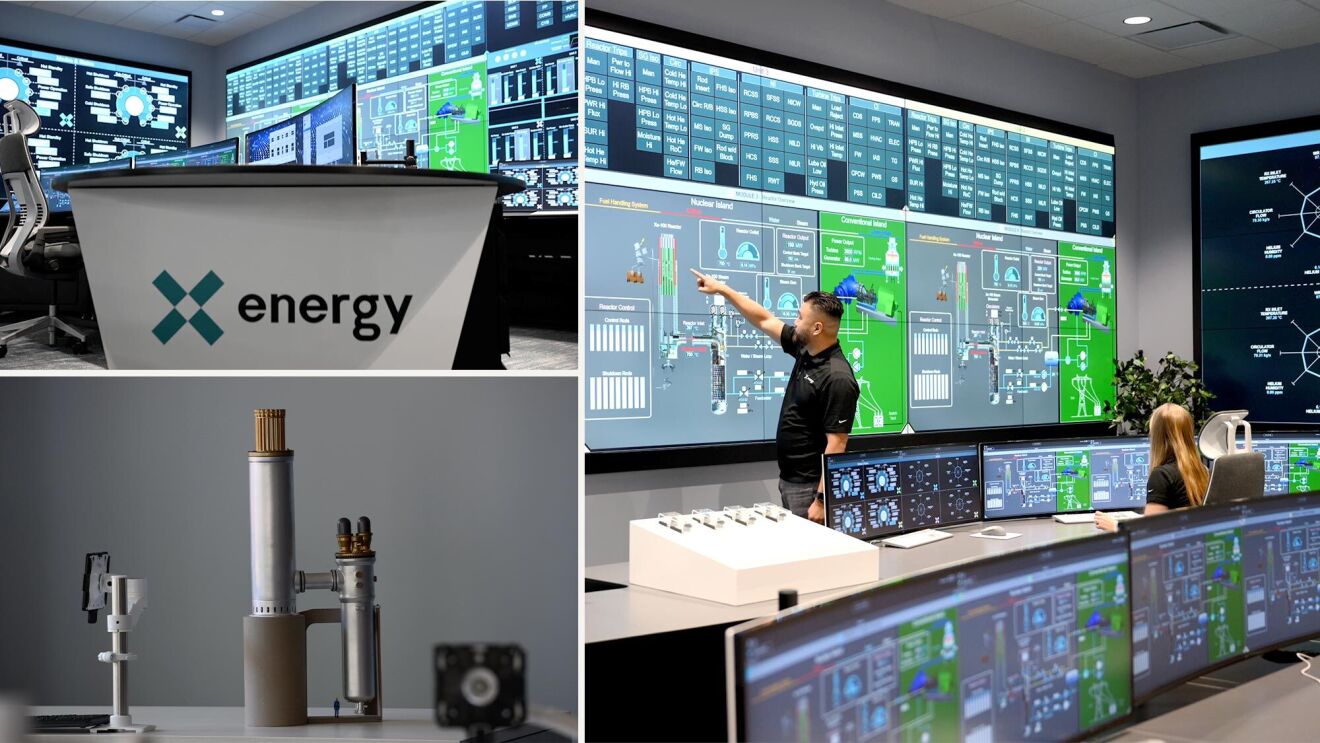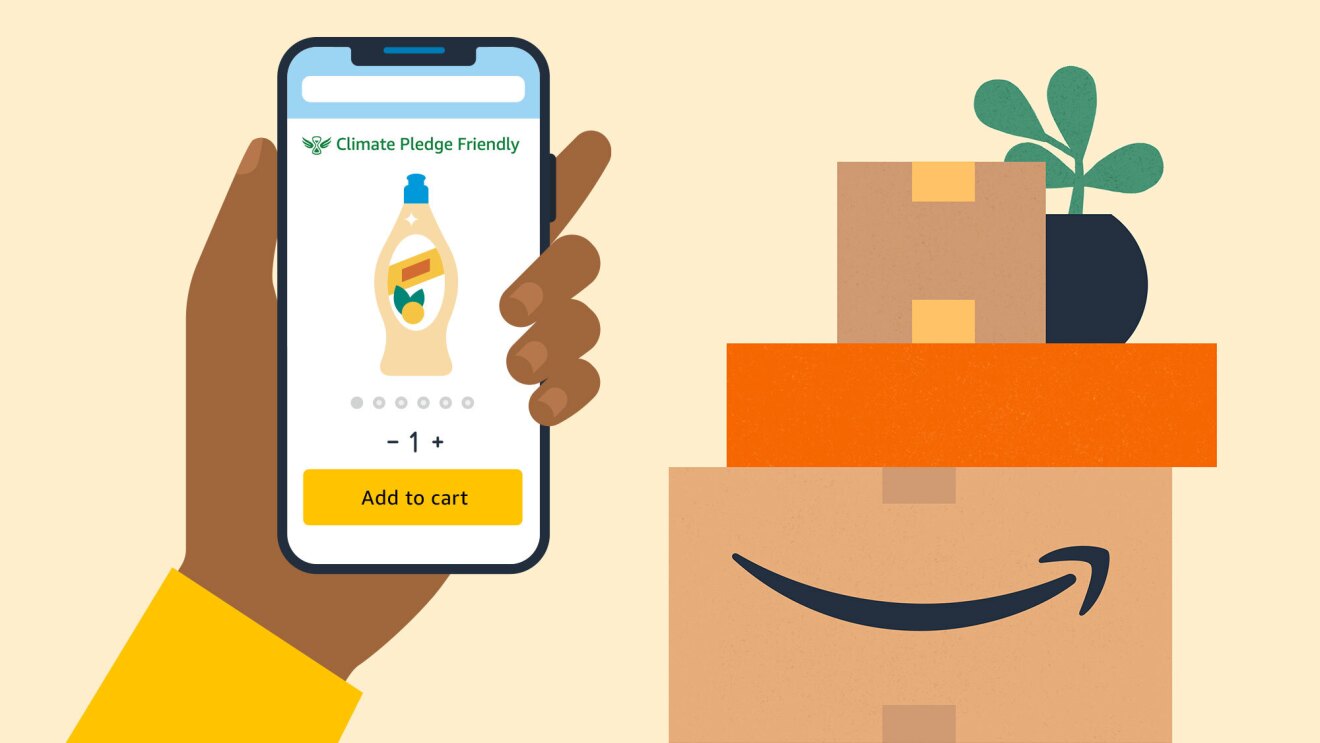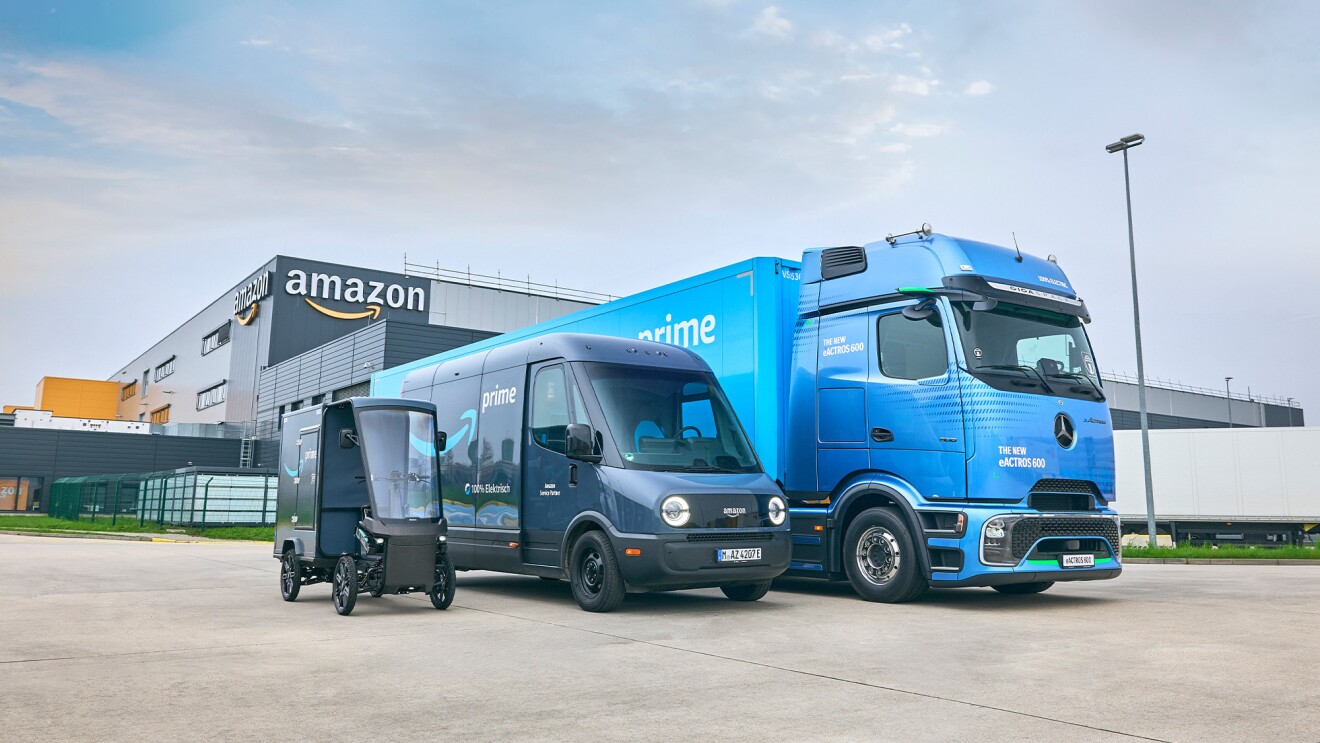Amazon believes we have a responsibility to help create a better future for our customers, our communities, our employees, and the planet we all inhabit. That’s why we co-founded The Climate Pledge in 2019 in partnership with Global Optimism, which is our commitment to achieving net-zero carbon emissions across our operations by 2040. More than 470 companies have joined The Climate Pledge and will help stimulate investment in the development of low-carbon products and services. We've made incredible progress since The Pledge launched, and we'll continue to drive action that creates meaningful progress and change across our business and natural surroundings.
Our sustainability goals are ambitious, and the innovation and efforts of Amazon employees and partners will help us make meaningful reductions in our carbon footprint and preserve our natural surroundings.
Here are some of the initiatives we’re working on to deliver on our Climate Pledge commitment.
Electrifying our delivery fleet
Amazon is committed to bringing 100,000 electric delivery vehicles on the road globally by 2030. This is a project that will help us avoid millions of metric tons of carbon each year. We’re off to an exciting start with our state-of-the-art electric vans from Rivian already making deliveries on roads across the U.S. and Europe. The vans also include the latest safety technology and updated features to keep drivers safe and comfortable on the road.

We’re also increasing the use of zero-emission transportation methods like e-bikes in dense urban areas, electric rickshaws in India, and the world’s first zero-emission cargo ship to reduce our environmental impact while making fast deliveries around the world. Learn more about our efforts to electrify Amazon’s delivery fleet.
Reducing packaging
Our first priority is to make sure your packages arrive safely and without damage. Once that’s covered, we can get creative with finding ways to use less packaging and prioritize recyclable materials. We use a science-based approach to find ways to avoid unnecessary packaging materials, swap to paper instead of plastic where possible, and ensure the right-sized packaging for our products.
We’re experimenting with new, lower-waste packaging at our lab in Sumner, Washington. We're also testing packaging from our third-party sellers so that we can ship products in their original box or bag where possible.

We’ve also introduced various new technologies to avoid extra materials and create the right box or bag for products.

In Europe, more than 50% of shipments now come in reduced, recyclable delivery packaging like a paper bag or cardboard envelope, or with no added packaging at all through the Ships in Product Packaging program.

These efforts have helped us reduce the amount of packaging we use per shipment packaging weight by 41% on average. We’ve avoided more than 2 million tons of packaging since 2015, and we’re just getting started. Learn more about how we’re reducing packaging.
Supporting nature conservation and restoration where our employees live and work
Amazon’s $100-million-dollar Right Now Climate Fund helps finance community-focused projects to mitigate the impacts of climate change, enhance biodiversity, and add green space to urban areas. Some of the projects the fund has supported include:



Allocating $15 million for nature-based projects in the Asia-Pacific region, with $3 million dedicated to India-based projects, including planting 300,000 trees to create a wildlife corridor for endangered tigers and other wildlife in the Western Ghats.


Replenishing and conserving water
An estimated 2 billion people around the world don’t have access to safe drinking water today, and roughly half of the world’s population is experiencing severe water scarcity for at least part of the year. That’s why Amazon is working to reduce the amount of water we use in our operations around the world. In fact, Amazon Web Services (AWS) has a plan to return more water than it uses by 2030. The company’s water replenishment projects to date around the world will deliver 3.9 billion liters of water to local communities each year. Some of these projects include:
A partnership with Storm Water Research Center to support local farmers and agricultural landowners in Virginia’s Bull Run and Broad Run watersheds.

Collaborations with nonprofits in Australia that will increase groundwater recharge, enhance local biodiversity, and support wildlife, including 15 endangered species in the affected area, such as the koala, Australasian bittern, and the Bauers Midge orchid.

Efforts with Water.org to bring sanitation and clean water access to households in India and Indonesia.

And more projects in countries around the world, including Spain, the United Kingdom, and South Africa.

Reducing carbon across Amazon’s physical stores
Amazon operates brick-and-mortar grocery and convenience stores across the U.S. and in parts of Europe. These locations focus on using sustainable sources of food (like coffee that’s certified by Rainforest Alliance, Fairtrade International, or Fair Trade USA) and other products (like paper towels and tissue from third-party certified sustainable sources). They also implement environmentally conscious design features in their construction to help reduce Amazon’s carbon footprint.
An Amazon Fresh store in Seattle was the first grocery store to receive Zero Carbon Certification from the International Future Living Institute. This certification is a highly rigorous standard for validating building decarbonization efforts. To achieve it, the Amazon Fresh store’s operations were reviewed for 12 consecutive months. The 35,000-squarefoot store includes climate-forward features like a natural-refrigerant-based refrigeration system, an all-electric kitchen and hot water heating systems, electric-vehicle charging stations for customers, and low-carbon concrete floors.

Whole Foods Market is also financing projects within its supply chain, aimed at reducing carbon and other greenhouse gas emissions. Some of these projects include rewilding efforts in collaboration with grain and legume suppliers and process electrification and ecosystem restoration with seafood suppliers.

Through initiatives like these, Whole Foods Market is working to build a more adaptable and resilient food system capable of feeding generations to come.
Investing in renewable energy to power our operations
By the end of 2022, Amazon purchased enough electricity to match 90% of the power used by our operations with renewable energy, and we’re on our way to reaching 100% renewable energy by 2025. We’ve enabled more than 500 wind and solar projects around the world in pursuit of this effort, and once they’re operational, they are expected to generate more than 77,000 gigawatt-hours of clean energy combined capacity each year. For context, that’s enough to power 7.2 million U.S. homes.
Some of the wind and solar projects Amazon has enabled include:
The largest solar energy and agricultural park in Italy, which will help power Amazon’s operations in the country and feed into the Italian power grid.

A solar farm in Maryland that is being constructed over a recently closed coal mine and is expected to employ more than 200 skilled workers during the construction phase.
 Maryland's Backbone solar project will look similar to Maple Hill, a similar solar farm built over a coal mine in Pennsylvania.
Maryland's Backbone solar project will look similar to Maple Hill, a similar solar farm built over a coal mine in Pennsylvania.Dozens of clean energy projects across the Asia-Pacific region, including China, India, Japan, New Zealand, and South Korea.

Kickstarting initiatives to scale climate finance
As part of the Right Now Climate Fund, Amazon is using a range of strategies—from direct investments to coalition building, to the development of new methodologies and technologies—to unlock market-based finance for urgent climate priorities. These priorities include tackling deforestation, restoring the forests, and supporting early deployments of carbon removal technology. Some of our efforts to-date have included:
Co-founding the LEAF Coalition, a public-private initiative aimed at mobilizing more than $1 billion to protect the world’s tropical forests.

Launching the Agroforestry and Restoration Accelerator to develop and explore innovative ways to support family farmers in the Amazon Rainforest basin. In one of the most biodiverse regions on earth, we are partnering with agroforestry startups in Brazil and Peru to help farmers develop new sources of income while increasing the ability to store more carbon on their land.

Providing more sustainable options for customers
We know our customers want more sustainable shopping and entertainment experiences. That’s why we’ve developed programs like Climate Pledge Friendly, which offers a wide selection of products from popular brands that meet sustainability standards and support our efforts to help preserve the natural world.

Amazon also built the first arena in the world to achieve Zero Carbon Certification from the International Living Future Institute. Climate Pledge Arena is located in the heart of downtown Seattle, and features sustainability components like all-electric operations and 100% renewable electricity sources, both from on-site solar panels and off-site renewable energy. The arena’s “Rain to Rink” system also harvests water off the roof that’s collected into a 15,000-gallon cistern and turned into ice for the Seattle Kraken's games.

These are just some of the many initiatives Amazon has undertaken to do our part in protecting the planet and giving back to the communities we serve. Learn more about Amazon’s sustainability efforts around the world.
Trending news and stories






